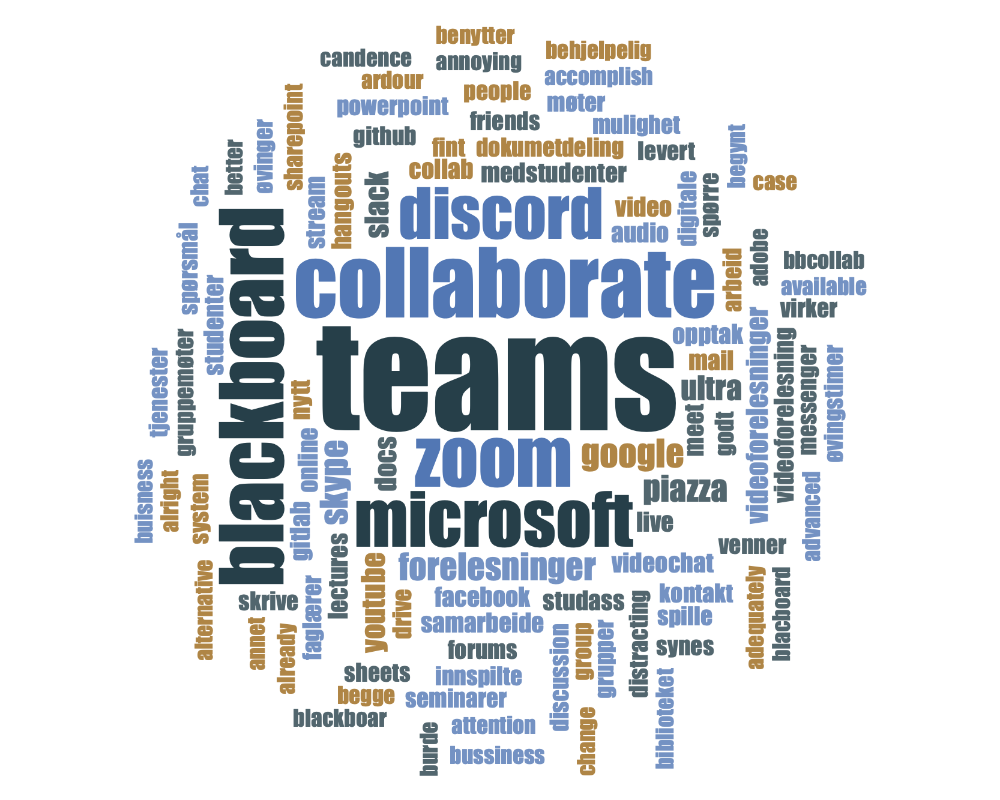First impressions from educators and students as NTNU transitions to an online only mode of learning
First impressions from educators and students as NTNU transitions to an online only mode of learning
When the Corona Virus shut down all Norwegian university campuses from the 12th march 2020, every single university educator was forced to digitalize all their teaching literally over a weekend. For how long is still unknown by the start of April. The Excited researchers on cross campus learning Rune Hjelsvold & Abdullah Bahmani and Madeleine Lorås our researcher on how students study, teamed up with Shaun S. Nykvist & Andreas Krokan in NTNU Drive to do research on what is happening while it is still happening. The research is ongoing, and the following is a short preliminary report.
“Jeg vet ikke om hvordan det kunne vært gjort annerledes for at det skulle blitt bedre. Til å være i den situasjonen vi er i synes jeg det er et godt studietilbud! “ (Student)
“NTNU and the faculty have provided much support, such as webinars and guidelines, how to manage. Colleagues are helpful. Students seem to have a positive attitude.” (Educator)
Background
The preliminary results presented here are based on an initial survey sent to students and educators during the first few days of them needing to move from a face-to-face or blended mode of teaching and learning to an online only mode of teaching and learning. The data includes responses from 303 students with over 50% of the responses coming from Computer Science and Engineering and the remaining responses coming from a mix of faculties and departments. There were also 56 educators from a large range of departments that responded to the survey. Key recommendations and takeaway messages are provided here to support both educators and students in this transition to an online mode of learning. These recommendations are based on a survey response that may not be representative of all students and educators at NTNU. The intention of this survey is to enable timely feedback to staff at NTNU, to better support student success, as the university moves to an online only mode of study.
Key recommendations
For students
- Establish good structures and productive routines for your day. Plan activities for your best performance for example write down a timetable that includes breaks, think about how long you are sitting and standing, take breaks from continuously looking at your screen.
- Give constructive feedback to your teachers, and where possible, make use of the reference groups and/or study program representatives.
- Take responsibility in discussion forums and conversations. Can you start a new discussion, provide someone with answers, or upvote good responses?
- Keep in touch with your peers and friends and take initiative! This is important when we have limited face-to-face social interaction.
- Make yourself available for, and actively participate in group work – perhaps use scheduling and task management tools for your group.
For educators
- Communicate clearly and succinctly to students in a timely manner about plans, changes and other subject related content.
- Provide a clear process for students to give you clear and constructive feedback E.g. a Microsoft Form survey or by using the reference group.
- Ensure that information about where to get help is very clear for them and communicated in the best possible way to reach all students. Many students are not aware of where and how they can receive help.
- Set up and make active use of virtual spaces for students to interact with each other for example a zoom or collaborate room with a compelling reason for students to participate. Students have noted that spontaneous interaction is impacting them the most.
- Ensure that all information about exams are clearly and timely communicated to the students. Exam uncertainty is causing undue stress.
- Help students to structure their work / study day. Remember that students are also in “home offices” and may be sharing resources with other students and family members. Some students lack a quiet study /workspace in the house.
- Be clear about your expectations for students, especially when it comes to group work and formative and summative assessment. Students have expressed concern over group work online – consider using asynchronous tools that support them to work at different times.
For leaders and administrators
- Communicate and coordinate messages for all students in a timely manner – avoid mixed messages, especially with relation to exam regulations and guidelines, processes for student support, illness and maintaining a social presence.
- Recognise the huge efforts and sacrifices staff are making to ensure student success.
- Recognise the increased time/workload needed to prepare for new pedagogical approaches to teaching as well as learning new tools to support them.
- Ensure that the educators receive the support that they need – talk to the educators.
- Provide support to staff that promotes wellbeing for example some educators feel isolated and lonely without the normal social interaction that they are familiar with.
- Provide a more collective approach to the coordination of activities and collaboration between educators.
Concluding notes
A large majority of students and educators have needed to change their approaches to teaching and learning. For instance, educators report using over 28 different tools to support online learning and many educators have been positive to the change. Time and resources are mentioned as an important barrier for change, however, this needs to be addressed as we move forward. Even though educators report a lack of practice in online education, they are adopting fast. Perhaps educators are more ready for change then we thought? Students generally show a positive attitude towards the change, even though there are still challenges to resolve. Let’s keep moving forward and keep up the good spirit!
Suddenly a very familiar sight, top left Madeleine Lorås, Ida Sortland, Rune Hjelsvold and Abdullah Bahmani discussing how to communicate the results in Zoom.

